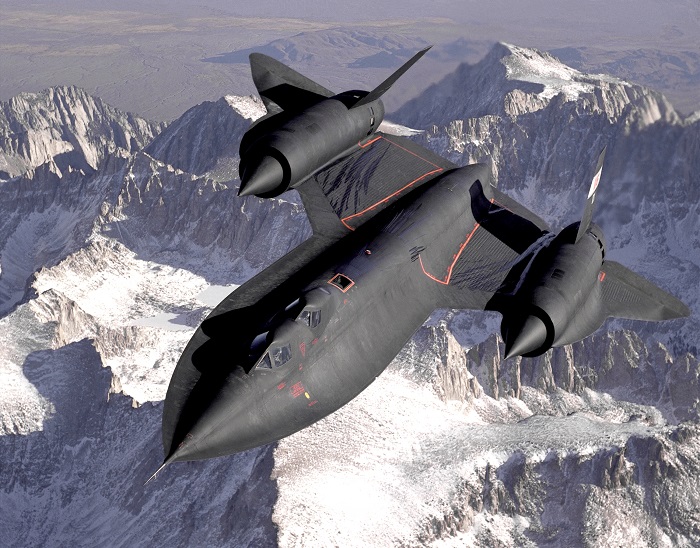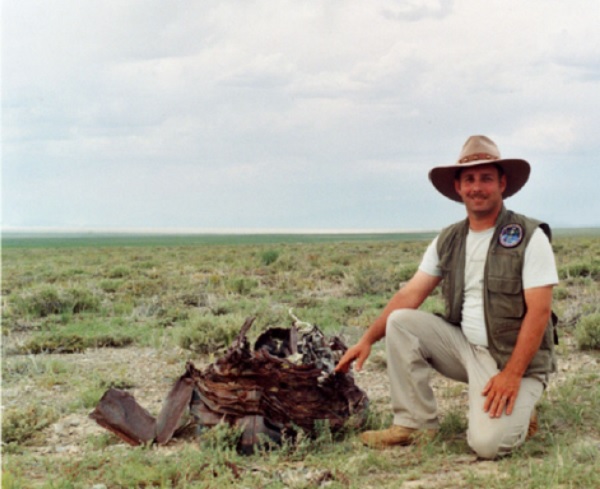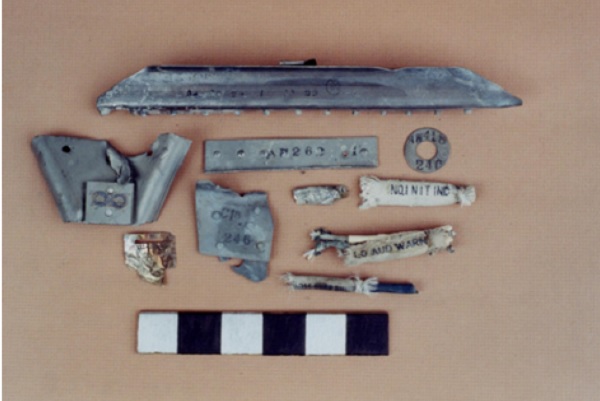.
SUNlite / By Peter W. Merlin
A pioneering forensic scientist named Professor Edmond Locard (1877-1966) once wrote, “Physical evidence cannot be wrong, it cannot perjure itself, it cannot be wholly absent. Only human failure to find it, study and understand it can diminish its value.”
When UFOs first caught my interest at age nine, I embraced this philosophy wholeheartedly. Blurry pictures and shaky video were not sufficient. I wanted hard evidence. I was not willing to simply take it on faith that unidentified aerial phenomena were extraterrestrial spaceships. Over the years, I became increasingly frustrated and disappointed with the apparent failure of researchers to prove the existence of extraterrestrial intelligence.
After all, the whole point of conducting UFO research is to identify unknown objects in the sky. Observed from afar, they provide little information. If, however, one of these objects were to crash then there would be a chance of obtaining physical remains for study. Subsequently I became interested in UFO crash retrieval stories because they offered the best hope of providing the evidence I craved.
Reading everything I could find on such famous (or infamous) incidents as Roswell, Aztec, and Kecksburg, I soon began to notice emerging patterns. It seemed that many UFO crash retrieval stories shared common elements:
The incident and recovery of debris • allegedly had the highest level of security classification (as in an unacknowledged special access “black” project).
The unknown object crashed on • public (usually rural) land in relatively close proximity to a civilian population.
Civilian witnesses were often inter• rogated and warned by government officials to forget what they saw.
The crash site was secured and con• trolled by government personnel for as long as deemed necessary to conduct recovery operations.
Cleanup of crash debris was given • top priority.
While overall details differ, all UFO crash retrieval stories seem to end the same way. A government cleanup crew – sometimes common soldiers, sometimes elite special forces – sanitizes the crash site, removing every trace of debris. Civilian UFO investigators are therefore left with no hope of finding physical evidence at the scene.
Is such a thing possible or even probable? Could the government sanitize a crash site? Taken at face value, it initially seemed likely. Whatever government agency responded to such an incident would probably have access to practically unlimited resources with which to accomplish the task of eradicating evidence. But, was there a historic precedent?
It occurred to me that government response in the wake of a crash involving a Top Secret aircraft (such as those flown from the remote Area 51 test facility at Groom Lake, Nevada, for example) would be virtually indistinguishable from the response to a UFO crash. National security concerns would dictate a need to prevent classified materials from falling into the hands of civilians or foreign intelligence agents.
In 1992 I began researching crashes involving once-classified aircraft. After conducting numerous interviews and reviewing thousands of pages of declassified documents I found that many incidents involving previously unacknowledged “black” programs bore startling similarities to alleged UFO crash retrievals. Examples included mishaps involving such craft as the A-12 spy plane, D-21B drone, and F-117A “stealth fighter.”
In the early 1960s, the Central Intelligence Agency funded and managed a project to design, build, test, and operate a reconnaissance plane capable of attaining speeds of more than 2,000 miles per hour and altitudes up to 90,000 feet. The Lockheed A-12 was first flown in 1962 but its existence remained a closely guarded secret until 1981. Two other variants – the YF-12A interceptor and SR-71 reconnaissance plane – were funded by the Air Force and publicly surfaced in 1964, in part to serve as a cover for sightings of the A-12 during testing or overseas deployment.
.

A-12 / USAF
When an A-12 crashed near Wendover, Utah, in May 1963, the CIA deflected public and media scrutiny with a cover story that an ordinary F-105 fighter jet had crashed. Declassified documents indicate that security was paramount and cleanup was top priority, even superseding the accident investigation.
Around the same time Lockheed developed a stealthy, ramjet-powered reconnaissance drone called the D-21 to be launched from an A-12 variant. A fatal accident led to a modified version, designated D-21B, which was instead carried under the wing of a B-52 bomber and launched using a booster rocket.
Subsequently, in September 1967 a D-21B was inadvertently launched during what was supposed to have been a captive test flight over central Nevada. According to interviews with military and civilian witnesses, personnel from Area 51 secured the crash site as quickly as possible and members of the cleanup crew walked shoulder-to-shoulder through the debris field, picking up every piece. Witnesses were admonished to forget what they had seen.
Lockheed’s F-117A, first flown in 1981, was designed to be virtually invisible to radar infrared detection. Developed as a clandestine “black” program in the late 1970s, tested at Area 51, and deployed to operational units at nearby Tonopah Test Range, the airplane’s existence was a closely guarded secret for nearly a decade.
When one of the secret jets crashed on a mountain near Bakersfield, California, in July 1986 the impact site was declared a National Defense Area to prevent entry by unauthorized personnel. Armed guards manned roadblocks at perimeter checkpoints and helicopters patrolled the skies as crews worked for several weeks to clean up the site. Air Force spokesmen refused to identify the aircraft type. Confirmation didn’t come until the existence of the F-117A was announced in November 1988.
With details of these events now declassified, it is possible for civilian researchers to study official correspondence and accident investigation reports, interview civilian and government witnesses, and visit crash sites to search for debris. Physical evidence is retrieved from a crash site can be studied and identified using declassified documents, photos, and even entire airframes on display in museums. The results of such research can serve as baseline data for comparison to UFO crash retrieval stories. In fact, I visited many such crash sites and in every instance found identifiable physical evidence. The sites had not been sanitized. I thought UFOlogists would embrace this information since they had always been told that the government cleans up every trace of debris at Top Secret crash sites. I now had conclusive proof that this was not true.
While I was wondering how best to share my data with UFO researchers, author Curtis Peebles introduced me to an online discussion forum called UFO UpDates hosted by Errol Bruce-Knapp on VirtuallyStrange.net. Forum members included a wide cross-section of people including some well-known names in UFOlogy and nearly every new post sparked a lively discussion. I gravitated toward the Roswell entries even though I had long since become convinced that the 1947 incident in the New Mexico desert involved nothing more fantastic than some sort of balloon and radar reflector system. Believers were still pushing the idea that government forces had completely sanitized the debris field.
In a July 24, 2005, UFO UpDates exchange Robert Gates and Christopher Allen debated the idea that civilian witnesses to the Roswell Incident had remained silent for decades as a result of secrecy oaths. As an illustrative example of a supposedly similar event Gates cited the A-12 crash near Wendover, claiming that, “local civilian witnesses were sworn to secrecy, and to this day have not uttered a word...”
I posted a response several days later, under the heading “Crash Retrieval: A New to behold. “I think the assumption for far too long among mainstream media, my colleagues, is that anyone who’s interested in UFOs is a crackpot, a whacko, someone in desperate need of some kind of psychiatric attention,” said Knapp. “And, unfortunately,” he added, “A lot of times, they’re right.”
Ryan Wood gave a presentation titled, “A New U.S. UFO Crash Retrieval,” that supposedly promised to be “the breakthrough event for UFOlogy.” Wood said the incident that allegedly occurred near Death Valley, California, according to a prospector’s story from an August 1949 edition of the San Francisco Examiner, offered “the potential for compelling physical evidence.” Wood showed recent photos of a desert rock outcrop he had identified as the “crash site” based on the help of someone using a “remote viewing” (skeptics would call it “imagining”) technique. Wood found no debris at the location.
Dr. Michael Salla, using what he called “testimony of key military whistleblowers” and the highly suspect “SOM-1 Special Operations Manual,” gave an overview of supposed covert mechanisms and processes used by the government to manage UFO crash retrievals. The idea of elite, covert teams capable of sanitizing crash sites was a common theme at the conference until I took the podium.
To prepare for my presentation I had researched about a dozen incidents involving retrievals of various classified aerospace vehicles and weapons in the western U.S., spanning a period of approximately 50 years. I wrote detailed case studies of seven incidents and then selected three that most closely resembled classic UFO crash retrieval stories. At the conference I explained to an audience of 300 how visiting these crash sites today and studying the remaining physical evidence can provide insight into the effectiveness of government/military crash retrieval activities. I summarized my findings by noting that I could provide numerous additional case studies involving incidents in which responsible government agencies had sufficient motivation to completely sanitize crash sites in order to protect advanced materials, design configurations, or other classified information. I reiterated that material evidence indicates that these sites were not sanitized despite good reason Perspective.” In order to make it stand out, I posted my message as a new topic and used the A-12 incident to frame my thesis that examining similar crash retrieval events could help create a template for studying alleged UFO crash retrieval stories. I gave a detailed account of my investigation of the Wendover mishap, citing documents, witness interviews, and fieldwork. I particularly emphasized the physical evidence that remained at the crash site itself without overtly mentioning the implications for Roswell. Readers could draw their own conclusions. With the hook thus baited, I awaited my first response.
I was prepared for a spirited debate, assertions that extraterrestrial crash sites would be treated differently than those of even the most exotic Earthly craft, and demands for proof. My rebuttals were ready. I was even prepared for at least some researchers to recognize the implication that I was offering hope of finding actual physical evidence at a UFO crash site (or disproving a false site). I was not prepared for silence.
A week went by with no response. None. Nada. Zip. Zilch. Zero. After more than a month without a single response to my revolutionary ideas, I unsubscribed to UFO UpDates. Did no one realize I was offering a set of tools with the potential to produce the Holy Grail of UFOlogy as well as to weed out hoaxes and false leads? Perhaps I just needed to find the right audience.
When I learned of the 4th Annual UFO Crash Retrieval Conference, scheduled for November 2006 in Las Vegas, I contacted organizer Ryan Wood and asked if he would like me to give a presentation called, “After the Fire: How the Government Responds to Top Secret Crashes.” He said, yes, and added me to the three-day program that included Richard Dolan, Michael Lindemann, Stanton Friedman, Nick Redfern, Linda Moulton Howe, Bruce Maccabee, and others.
During the event KLAS-TV investigative reporter George Knapp gave a keynote address covering his experiences with UFOlogy that included interviews with such controversial figures as Robert Lazar and Dr. Dan Burish. His rapid-fire delivery and subtle turn of phrase were awesome and opportunity to do so. I also emphasized that although some UFO crash incidents would doubtless prove to be hoaxes or misidentified terrestrial objects, if they involved real events, then evidence should remain to determine the nature of those events.
The audience greeted the conclusion of my lecture with polite applause and surprisingly few questions though I was gratified that some people had understood my main points. The other speakers, of whom at least several support the idea that “black ops” teams routinely sanitize UFO crash sites, largely ignored me for the duration of the conference. Someone later told me that Linda Moulton Howe even suggested that I was “an obvious government agent.”
As with my earlier UFO UpDates experience, I was surprised by such attitudes. For the first time ever, someone was offering UFO researchers hope of finding proof of extraterrestrial intelligence. Wouldn’t a government disinformation agent try to crush such hope by suggesting that nothing would be left to find because it had all been cleaned up?
I certainly hadn’t presented my thesis from a skeptical viewpoint. I merely provided an investigative tool that would be equally useful to believers and skeptics alike. In an era when numerous popular television shows (C.S.I. – Crime Scene Investigation and its spinoffs, Navy NCIS, Forensic Files, and others) feature forensic science as a tool for solving mysteries using analysis of physical evidence, UFO researchers are rejecting or ignoring such methods. What are they afraid of?
.

Peter with a piece of debris from the D-21b crash site, which was supposedly cleaned thoroughly and left no trace of the classified object crash.
.

Some of the many pieces Peter recovered from an A-12 crash site in Utah that was also cleaned up with an effort to retrieve every scrap of material from the craft. Notice the inspection markings and serial numbers that can trace the debris back to the skunkworks.
.
Editor’s note: Peter has an excellent account of the 1963 A-12 crash in Utah . The title of the article is called “Oxcart down! - Searching for the remains of a secret spy plane. It is a superb read. One of the SECRET documents presented has the reporting officer stating, “All small bits and pieces meticulously picked up by hand....” Apparently, not ALL had been recovered.
,
So what??
For those of the crashed spaceships persuasion, Peter’s experience demonstrates that no crash site can be sanitized to the point that no debris would be left. Every location is going to have some scraps left over that were missed! There have been at least two expeditions to the Foster Ranch debris field and nothing has ever been found that was unearthly.
Editor’s note: Peter has an excellent account of the 1963 A-12 crash in Utah . The title of the article is called “Oxcart down! - Searching for the remains of a secret spy plane. It is a superb read. One of the SECRET documents presented has the reporting officer stating, “All small bits and pieces meticulously picked up by hand....” Apparently, not ALL had been recovered.
To top it off, there is supposed to be at least one other location for the rest of the crash, which shifts every time a new book is published. No verifiable alien spaceship debris has ever been found at any of these locations.
Were those that cleaned up the actual crash sites of these classified aircraft inept? Were the soldiers and officers at Roswell just better at picking up every single scrap of debris? If not, why hasn’t anyone been able to produce a single item from the crash even though two extremely careful examinations have been made?
The lack of any verifiable physical evidence in these locations indicates what landed there was cleaned up the way no other crash site was ever “sanitized” or that it was something of a more earthly origin.
.
Quelle: SUNlite 4/2009 / Siehe auch Beitrag von Jochen Ickinger auf CENAP-UFO-Meldestelle-Blog
